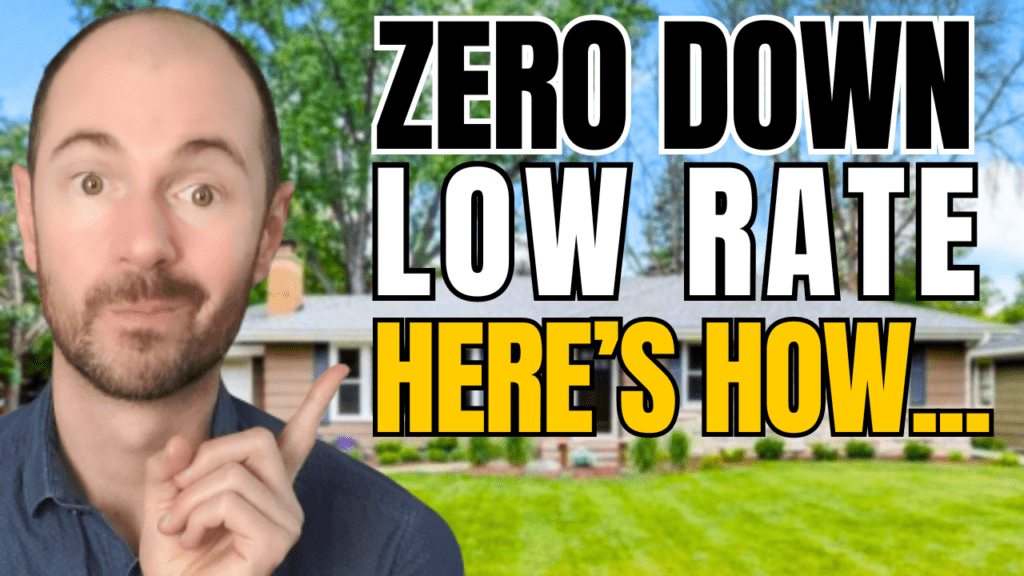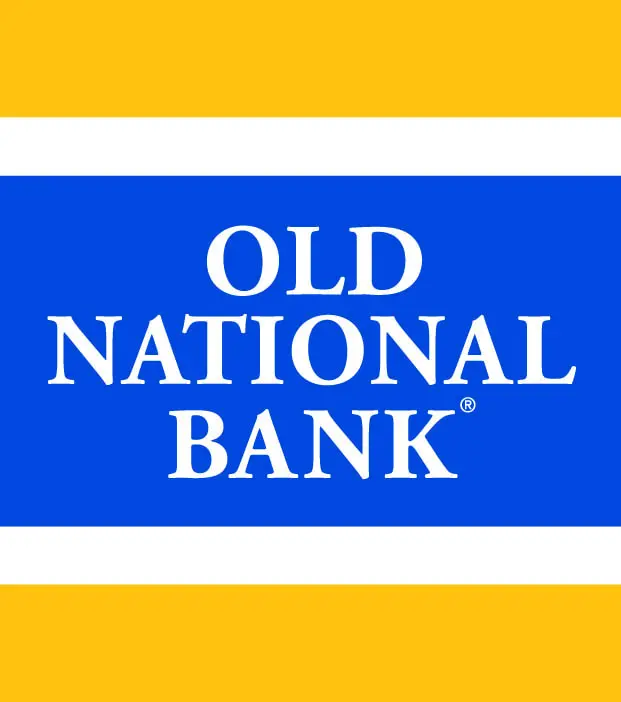How to Get an Affordable Mortgage Payment
Despite the expert predictions out there, next years housing market looks like more of the same
And by that I mean high rates and high prices. But that doesn’t mean you can’t get a low rate and an affordable monthly mortgage payment because you can, and here’s how…

Is the Housing Market Competitive?
The first thing is you need to look at your financing options differently. You can’t control the market but you can control your mortgage rate to a certain extent, which is obviously going to have a huge impact on your monthly payment.
The next thing is we know that home prices are high and inventory is tight, but this is old news. There are signs that the market is loosening up and we are finally coming out of the crazy market we’ve become accustomed to. And whether you think the housing market sucks or it’s awesome, you’re right!
Finally, don’t assume that you’re automatically competing with 20 other buyers and you have to overbid on every house you see just to get your offer accepted. That’s actually changing or going to change in a lot of markets.
Are there 0% Down Loan Options
As a mortgage loan officer, I can tell you there has never been an easier time to buy a house without a massive down payment. You need credit and income to qualify for a mortgage and of course you need a house to buy (aka inventory), but you actually don’t need a down payment in a lot of cases especially if you’re a first time buyer.
There zero down FHA loans, 1% down conventional loans, and of course VA and USDA loans which are zero down programs. There are at least 3 different grant programs offered by banks in my area, as well as one of the best down payment assistance programs, which is offered through the Minnesota Housing Finance Agency.
So even if you do need a down payment, you can usually find it somewhere – in fact, if said that it’s probably easier to find a down payment than a house right now. In any case, you’ll have a little money out of pocket; you’ll pay for earnest money, inspections, appraisals, or other closing costs when you buy a primary residence using a traditional mortgage. However, it can be very minimal, $1,000 – $2,000 for instance. If you don’t have a couple grand in the bank, maybe buying a house isn’t on the menu just yet.
How Much Should I Put Down on a House?
I’m going to assume that you do have money in the bank but instead of spending it and locking it up into a non liquid asset like a house, you might consider putting as little down as possible and keeping your cash.
It’s like when you buy a car, well you can buy a car for $20,000 cash and not have any money left or you can finance it and pay $400 per month, for example. I realize you pay interest and more money for that car over time, but if I don’t have other savings, I feel better having some reserves in the bank. Incase that car needs to be repaired, or I get laid off, or I want to take time off or go on a vacation – you want some cash in the bank.
It’s the same when you purchase a home. If rates and prices are high, you maybe paying $500 more per month than what’s ideal to you, but if you don’t have to put that big down payment, you can use that cash to absorb that cost over time. If you were going to put $20k down, but you can use a 0% down program, get seller concessions, grants or down payment assistance instead, well your payment is higher by $500 but you have $20,000 of cash to absorb that cost for 40 months or a little over 3 years all else being equal.
How Do I Get a Low Mortgage Rate?
With any luck, you’ll be able to refinance within that time. However, if you don’t want to speculate on where rate are going and you don’t want to risk higher rates in the future, you can actually pay for a lower rate. A lot of buyers don’t know this but there’s not just one rate out there, you can choose whatever rate you want in theory. However, the lower the rate you choose, the more lender fees you pay.
You can ask the seller to pay those lender fees for you in the form of seller concessions. The biggest sign of a market slow down is the length of time houses are sitting on the market, which is increasing in some areas. Buyers are also sitting on the sidelines and not making moves right now because they’re worried about the rate, the payment, the prices and all the things that make people nervous about the market.
This is good news for serious buyers because the implication is that there won’t be as much competition as you think. You don’t need to offer over asking, be in multiple offers, and waiving inspections. And sellers are willing to work with you because they want to sell for a number of reasons; before winter, before school, they have another house they’re trying to buy or they simply get impatient.
Then they start lowering the prices, which is great for bringing in more buyers. Or they can offer to pay for your closing costs, which means the seller can essentially pay for your lower rate as well. In fact there’s a popular mortgage product called a 2-1 buydown. It reduces your mortgage rate by 2 percentage points in the first year, 1 percent in the second year, and goes up to the actual rate in the 3rd year.
This can literally save you hundreds of dollars per month, thousands of dollars over a 24 month period, and that savings is what the 2-1 buydown costs. Let’s say you want to buy a $350,000 house and maybe you’re putting zero down and the going rate is 8%. For the first year, your payment is going to be reduced by $470 per month, then $240 per month for the second year and you’re going to save $8,512 over the 2 year period, which is the cost and the seller can pay for it!
What is the Risk of Refinancing a Mortgage?
If you do end up refinancing your rate within that period, that cost is prorated back to you. One thing to mention, if you are planning on refinancing, you will need some amount of equity in your property when you refinance. There will be some closing costs involved, which you can roll into the new loan, but if your property value stays the same or goes down, that can make it difficult to refinance in some cases without having a bunch of money out of pocket.
Typically you need a minimum of 3% equity in your home when you refinance. It’s really important that you understand that yes rates might go down, yes you’re going to hold on to your cash, but you could be in a bad situation if you want to refinance and you don’t have any equity in your home.
This is probably the biggest risk when you don’t put any money down on your home, but this is always a risk regardless of whether you put money down or not. For instance, if you purchased today with a 5% down payment and the value of your home went down 5%, you’d be in a tough spot to refinance as well.
Â
Having said that, you actually can refinance with FHA streamline refinances if you’re under water, as well as VA IRRL loans. It should be noted that after the great financial crisis, you could refinance with conventional loans even if you were upside down on your house. However, for the time being, I would want you to understand that’s always a risk when we talk about refinancing.
Will it Get Easier to Buy a House?
Regardless of what you decide to do, you should know that the housing market has never been all roses and sunshine – there are always challenges to overcome. Your parents may have purchased a house when they costs $50000, but incomes were lower, and rates were 18%. Houses were cheap after the great recession but you probably had a tough time getting approved for a loan and there definitely weren’t all these first time buyer programs, grants, and down payment assistance available.
Now we have clear underwriting rules, banks and lenders want to lend, we have all the programs, but rates and prices are high, which is the challenge many home buyers face today. What you want to do is work with motivated sellers and make an offer.
If you want to wait, do it for the right reasons. Take time to fix credit, pay off debt, save money, or get that new job. These are all great reasons to wait and get yourself in a better position to buy if that’s what you want to do. Or you can wait to buy with your spouse or significant other instead of being responsible for a house and a mortgage payment all by yourself.
In addition, maybe you put in a little extra work as a landlord and buy a duplex or multi unit and have your tenants pay your mortgage for you. All of these programs except for USDA allow you to purchase a duplex or a 3-4 unit as well. You can get creative with purchase rehab loans as well. This is where you get a mortgage to purchase the property and roll in the rehab costs to fix up the place. These are the FHA 203k and Conventional HomeStyle loans.
Start your conversation with a local mortgage lender who can evaluate your situation and tell you what’s available out there. I’m in the Minneapolis St. Paul Twin Cities area and I know of multiple programs that would limit your out of pocket investment to purchase a home. If you’re in Minnesota, reach out anytime and visit my website for mor information!
